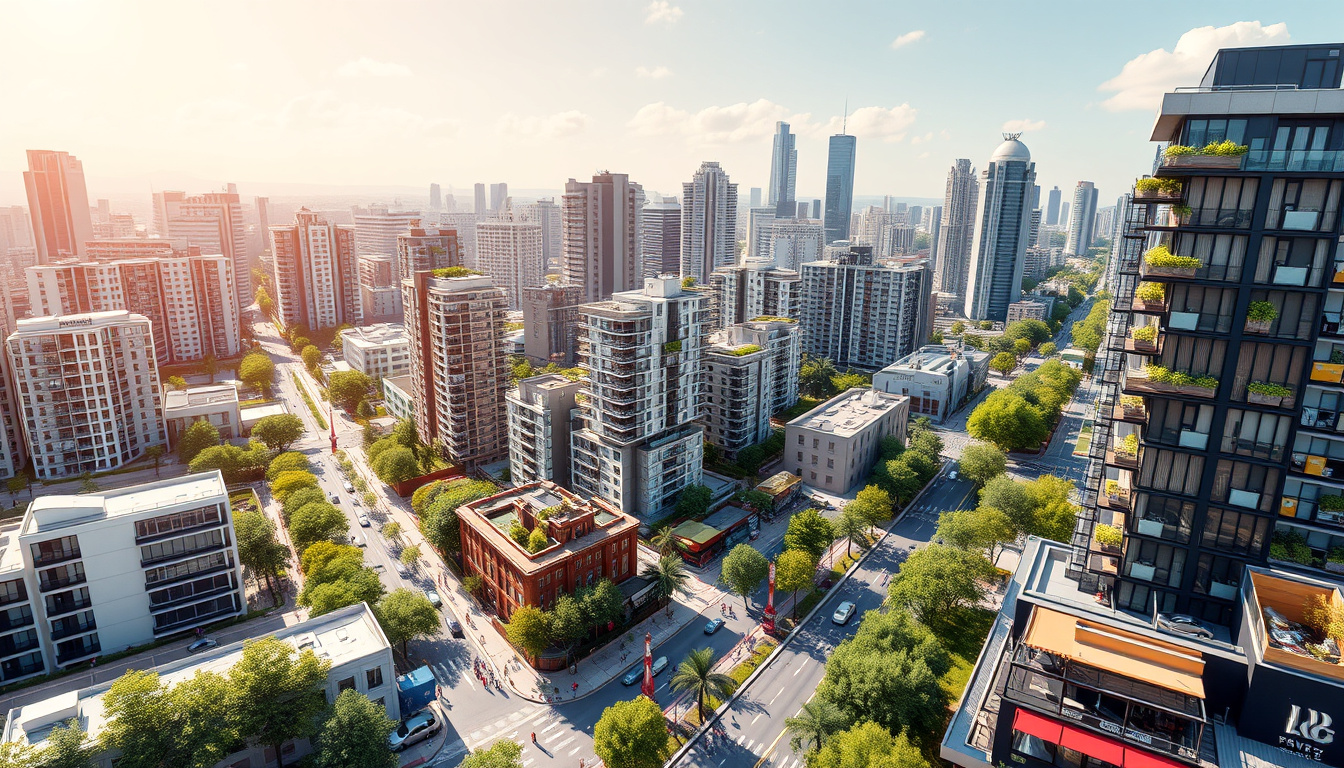In the context of urban planning, densification is a vital strategy aimed at maximizing the utility of existing urban spaces while promoting sustainable growth. This guide delves into the principles, benefits, and challenges of urban densification, offering insights for city planners, architects, and policymakers.
What is Densification?
Densification, in urban contexts, refers to the process of increasing the density of development within a given area. This is achieved by optimizing land use through strategies like building higher structures, infilling vacant lots, and repurposing existing properties. The overarching goal is to cultivate vibrant, efficient, and sustainable urban environments without the need for sprawling new developments on undeveloped land.
The Benefits of Densification
-
Efficient Land Use: Densification promotes the efficient use of land, reducing the environmental impact associated with urban expansion. By maximizing existing spaces, cities can minimize the need for new infrastructure and the accompanying costs.
-
Increased Housing Availability: Urban densification can help meet the growing demand for housing in densely populated areas. By allowing for taller buildings and creating more residential units, cities can address housing shortages while keeping living costs manageable.
-
Improved Transportation Options: Higher density typically leads to better public transportation options. When more residents live in close proximity, public transport systems can be more economically viable and widely utilized, thereby reducing reliance on cars and lowering carbon emissions.
-
Enhanced Community Interactions: Densified urban areas often provide more opportunities for social interaction. Parks, cafés, markets, and community centers can thrive in environments where foot traffic is higher, fostering a sense of community and belonging.
-
Economic Development: Increased density can promote local businesses and attract new investments. More residents mean a larger customer base for shops and services, stimulating local economies.
Challenges of Densification
Despite its numerous advantages, densification is not without challenges:
-
Community Resistance: Often, existing residents oppose densification plans, fearing increased congestion, loss of neighborhood character, or disruption to their quality of life. Effective community engagement and transparent communication are essential to address these concerns.
-
Infrastructure Strain: Rapid densification can place additional stress on existing urban infrastructure, such as roads, water supply, and sewage systems. Planning for adequate infrastructure improvements is vital to accommodate increased density.
-
Equity Concerns: There is a risk that densification could lead to gentrification, displacing long-term residents due to rising property values and rents. Policymakers must ensure that affordable housing options are preserved and expanded as urban areas densify.
-
Environmental Considerations: While densification can reduce urban sprawl, it is essential to consider its environmental impact. Urban heat islands, traffic congestion, and air quality may all worsen if densification is not approached strategically.

Strategies for Successful Densification
To harness the benefits of densification while addressing its challenges, city planners can adopt various strategies:
-
Mixed-Use Developments: Encouraging developments that combine residential, commercial, and recreational spaces can create vibrant neighborhoods and reduce travel distances for residents.
-
Infill Development: Utilizing vacant lots and underutilized spaces within urban areas helps to combat sprawl and make efficient use of land.
-
Zoning Policy Reforms: Revising zoning laws to allow for higher densities and diversified land uses can facilitate densification. Zoning policies should promote compatibility with surrounding areas while encouraging sustainable practices.
-
Community Engagement: Engaging with community members early in the densification process is crucial for ensuring public support. Planners should seek input and feedback to create solutions that reflect the community’s needs.
-
Sustainable Practices: Incorporating green building practices, renewable energy sources, and sustainable infrastructure can mitigate the environmental impacts associated with increased density.
Conclusion
Densification stands as a critical method for urban transformation, balancing the need for growth with sustainability and community integrity. As cities continue to evolve in response to population pressures and environmental concerns, understanding the principles of densification will be essential for creating smart, resilient, and livable urban spaces. By embracing innovative planning and prioritizing community engagement, cities can unlock their full potential and ensure that densification contributes positively to the urban experience.



